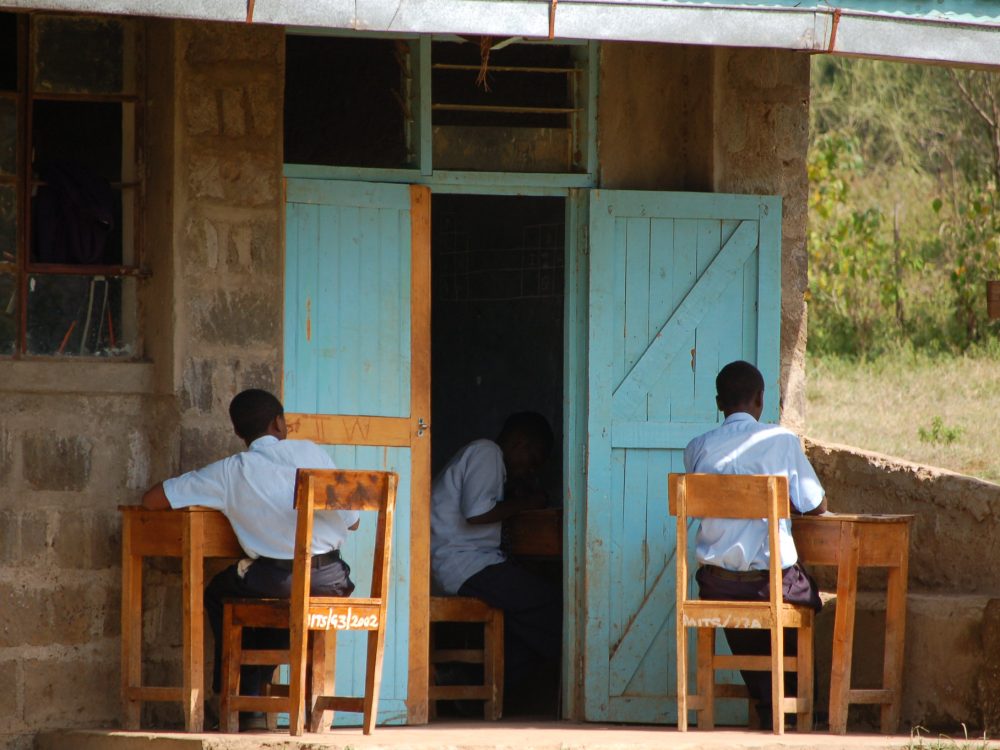Announcing Development Gateway: An IREX Venture’s Data on Youth and Tobacco in Africa (DaYTA) Program
Development Gateway: An IREX Venture (DG)—with support from The Bill & Melinda Gates Foundation (BMGF)—is pleased to announce a new program, Data on Youth and Tobacco in Africa (DaYTA). This three-year, $4 million program will advance tobacco control efforts in sub-Saharan Africa (SSA) by addressing data gaps related to tobacco use among 10- to 17-year-olds in Kenya, Nigeria, and the Democratic Republic of the Congo (DRC). Overall, the DaYTA program will empower stakeholders to make timely, data-driven decisions by using evidence to inform policy and, in turn, create a healthier populace in SSA.
A Vulnerable Population: Why We Need Data on Adolescent Tobacco Use
African countries have some of the youngest populations in the world; for example, more than half of the population of Nigeria is under the age of 18.1 Most of the available evidence captures data from 13- to 15-year-olds even though evidence from SSA shows that the age of smoking initiation among young people ranges from as young as 7 years old to about 16 years old.2,3 In countries such as Kenya, among all psychoactive substances, tobacco is the most widely known and readily available and used by those aged 14 years and younger who are in primary school.4 For our three focus countries, the available data is either outdated (2012 for Nigeria5 and 2014 for Kenya6) or doesn’t exist (for DRC), making this data collection a priority for the African tobacco control community.
Additionally, adolescents are especially vulnerable to taking up tobacco use at a young age in some African countries because the tobacco industry aggressively markets to them: advertising near schools and playgrounds, providing free products, and selling youth-oriented flavors in novel tobacco products.
Where are We?: What Data We Know is Missing (so Far)
The lack of data on adolescent tobacco use in African countries limits policymakers’ ability to make data-informed decisions on tobacco control policies. Through the implementation of our Tobacco Control Data Initiative (TCDI) program, DG has become increasingly aware of the limited data on adolescent tobacco use. Three specific types of data that we know to be missing are:
- Data about out-of-school adolescents and females: The Global Youth Tobacco Survey, a predominant source on youth-focused tobacco data, focuses on adolescents who are still in school. This means that data on out-of-school youth is missing and female adolescents tobacco use is likely underrepresented, since the adolescents who are most likely to begin smoking are those who are not enrolled in school and males in urban areas are most likely to be in school (see footnote 7);
- Data on certain age groups: Most of the available data is related to 13- to 15-year-olds. However, studies in SSA show that adolescent tobacco use begins as young as 7 through age 16 (see footnote 8). Therefore, the age of adolescents surveyed needs to be expanded in order to capture more comprehensive data; and
- Tobacco products included in surveys are limited: Cigarettes and smokeless tobacco products are the most commonly surveyed products, despite the rising prevalence of shisha and e-cigarettes. Policymakers will be able to create more robust tobacco control policies and better regulations once these products are included in surveys.
DaYTA: Helping Inform Policy on SSA’s Adolescents

In the initial stage of the DaYTA program, DG will work with stakeholders in Nigeria, Kenya, and the DRC to conduct a rapid assessment to confirm the data gaps and identify what areas need to be prioritized. The assessment findings will be validated in a series of DG-hosted workshops with stakeholders, during which research questions and methodologies for conducting the primary research will be finalized.
After priorities are established, DG will conduct primary research and gather country-level data on tobacco use among adolescents aged 10- to 17-year-olds in all three countries. DG aims to capture data on the following:
- Type, frequency, and quantity of tobacco use;
- Use of novel tobacco products (e.g., electronic nicotine or non-nicotine delivery systems);
- How tobacco products are accessed;
- Lifestyle factors associated with tobacco use (e.g., attending or not attending school, family history of tobacco use, etc.); and
- Any other data gaps identified as a result of the assessment.
Once this data is finalized, it will be integrated into the relevant TCDI Country Dashboards and disseminated to stakeholders.
Stay tuned for more about DaYTA! In the meantime, learn about the TCDI program by following the links below.
TCDI Case Study
TCDI South Africa Dashboard
TCDI Nigeria Dashboard
- National Population Commission (NPC) [Nigeria] and ICF. 2019. Nigeria Demographic and Health Survey 2018. Abuja, Nigeria, and Rockville, Maryland, USA: NPC and ICF.
- Chido-Amajuoyi OG, Fueta P, Mantey D. Age at Smoking Initiation and Prevalence of Cigarette Use Among Youths in Sub-Saharan Africa, 2014-2017. JAMA Network Open. 2021;4(5):e218060. Published 2021 May 3. doi:10.1001/jamanetworkopen.2021.8060.
- Veeranki, S.P., John, R.M., Ibrahim, A. et al. Age of smoking initiation among adolescents in Africa. Int J Public Health 62, 63–72 (2017). https://doi.org/10.1007/s00038-016-0888-7.
- Lelei K, Muteti J. Okioma V, Njenga A. Policy brief on status of drugs and substance abuse among primary school pupils in Kenya. African Journal of Alcohol & Drug Abuse. 2021, 3:26-29.
- Federal Ministry of Health of Nigeria, National Bureau of Statistics, World Health Organization Regional Office for Africa, CDC Foundation, CDC. Global adult tobacco survey: country report 2012. https://extranet.who.int/ncdsmicrodata/index.php/catalog/250/related-materials.
- Ministry of Health Tobacco Control Unit, Kenya National Bureau of Statistics, World Health Organization, CDC Foundation, CDC. Global adult tobacco survey: Fact sheet. 2014. https://www.afro.who.int/sites/default/files/2017-09/gats-kenya-2014-factsheet.pdf.
- Desai, R., Mercken, L. A., Ruiter, R. A., Schepers, J., & Reddy, P. S. (2019). Cigarette smoking and reasons for leaving school among school dropouts in South Africa. BMC public health, 19(1), 1-10.22.
Oyewole, B. K., Animasahun, V. J., & Chapman, H. J. (2018). Tobacco use in Nigerian youth: A systematic review. PloS one, 13(5), e0196362. - Chido-Amajuoyi OG, Fueta P, Mantey D. Age at Smoking Initiation and Prevalence of Cigarette Use Among Youths in Sub-Saharan Africa, 2014-2017. JAMA Network Open. 2021;4(5):e218060. Published 2021 May 3. doi:10.1001/jamanetworkopen.2021.8060.
Veeranki, S.P., John, R.M., Ibrahim, A. et al. Age of smoking initiation among adolescents in Africa. Int J Public Health 62, 63–72 (2017). https://doi.org/10.1007/s00038-016-0888-7.
Share
Recent Posts

Shared Struggles, Shared Solutions: Education and Cross-Sector Data Use Insights
This blog draws on DG’s experience in climate, health, aid management, and agriculture to explore connections between the challenges of data collection, data hosting, and data governance across different sectors and what the solutions to overcoming them can teach us about strengthening education data systems.

Economic Toll of Tobacco-Related Diseases in Kenya: New Research Findings
Development Gateway: An IREX Venture (DG) is pleased to announce the publication of a research manuscript on the Economic Costs of Tobacco-Related Illnesses in Kenya. This research was carried out as part of the Tobacco Control Data Initiative (TCDI) activities in Kenya and is part of a broader report on Morbidity and Mortality from Tobacco Use in Kenya.

The Data Crisis Following USAID’s Withdrawal: Opportunities to Reimagine Data Systems
For decades, USAID and other US government funding supported global data systems, from health surveys and early warning tools to digital infrastructure for ministries. The abrupt termination of USAID funding has triggered twin crises: a halt to data collection and the undermining of digital systems – reveal existing inefficiencies and instabilities in how data is collected, managed, and shared both within and between countries.